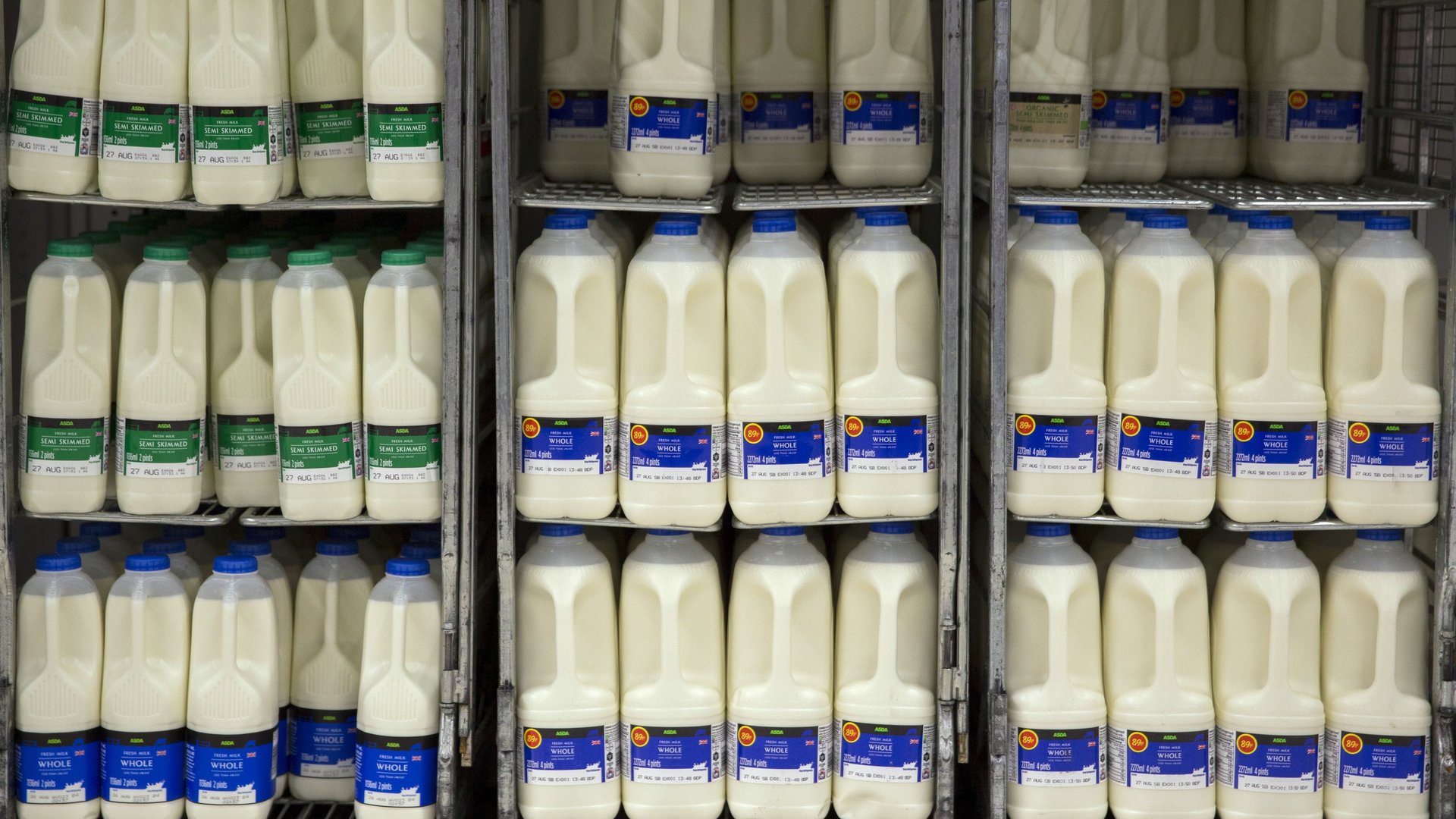Covid-19 has the US cheese and milk industries on the brink
For dairy farmers in the United States, the timing of the Covid-19 pandemic could hardly be worse.


For dairy farmers in the United States, the timing of the Covid-19 pandemic could hardly be worse.
As the disease caused by the coronavirus SARS-CoV-2 spreads across the US and changes so many aspects of public life, it’s also reshaping how consumers buy dairy products. And while lots of farmers are experiencing increased demand for their foods, experts estimate demand for dairy has evaporated by nearly half.
The US dairy supply generally increases in the spring season, part of the natural cadence at which cows produce milk. But according to a new report by CoBank (pdf), there’s little demand for it this year. Economic weakness led big export markets, including China, to slash the volume of US milk they’re importing. School closings across the US—particularly elementary schools—have also put a major dent in milk consumption.
“The biggest thing is the collapse in the restaurant and food service demand,” says Lucas Fuess, a food industry analyst with HighGround Dairy. “It’s tough to get numbers, but I would estimate as much as 40% of dairy goes into food service channels.”
That’s a significant number, especially considering many US dairies were already largely struggling financially. Farm balance sheets, checking accounts, and cashflow were already in a pretty critical situation going into 2020, Fuess says. Now, with the US expected to skid into a recession, people may be spending less on premium dairy products. The result: “We could see a lot of bankruptcies pretty quickly,” he says.
There are a few ways to visualize the pain dairy farms are feeling. One is by charting out prices on the spot market, a daily auction where buyers and sellers make bids for and trade dairy products. The daily settlements set the prices that companies use when doing business, reflecting how much farmers can get for their goods. Spot market prices of butter and cheese blocks show a clear dip in the last part of March.
Another way to visualize the downturn: actual photos and videos of milk dumping being shared by dairies on Twitter. Farmers who have more milk than they can sell are literally dumping whole milk onto the grounds of their farms because there’s nowhere for it to go.
There are a couple bright spots, the CoBank report points out.
“A stable-to-slowly shrinking cow herd will keep milk production figures in check while the world emerges from a global pandemic,” it states. The number of dairy cows in the US has been decreasing for decades as farmers have found ways to increase the amount of milk individual cows produce. The stability of that downward trend will help farmers plan for future business. “Feed costs are expected to be lower, which will also help dairy farmers weather this uncertain time.”
The question is how many farms will be able to weather the current crisis.